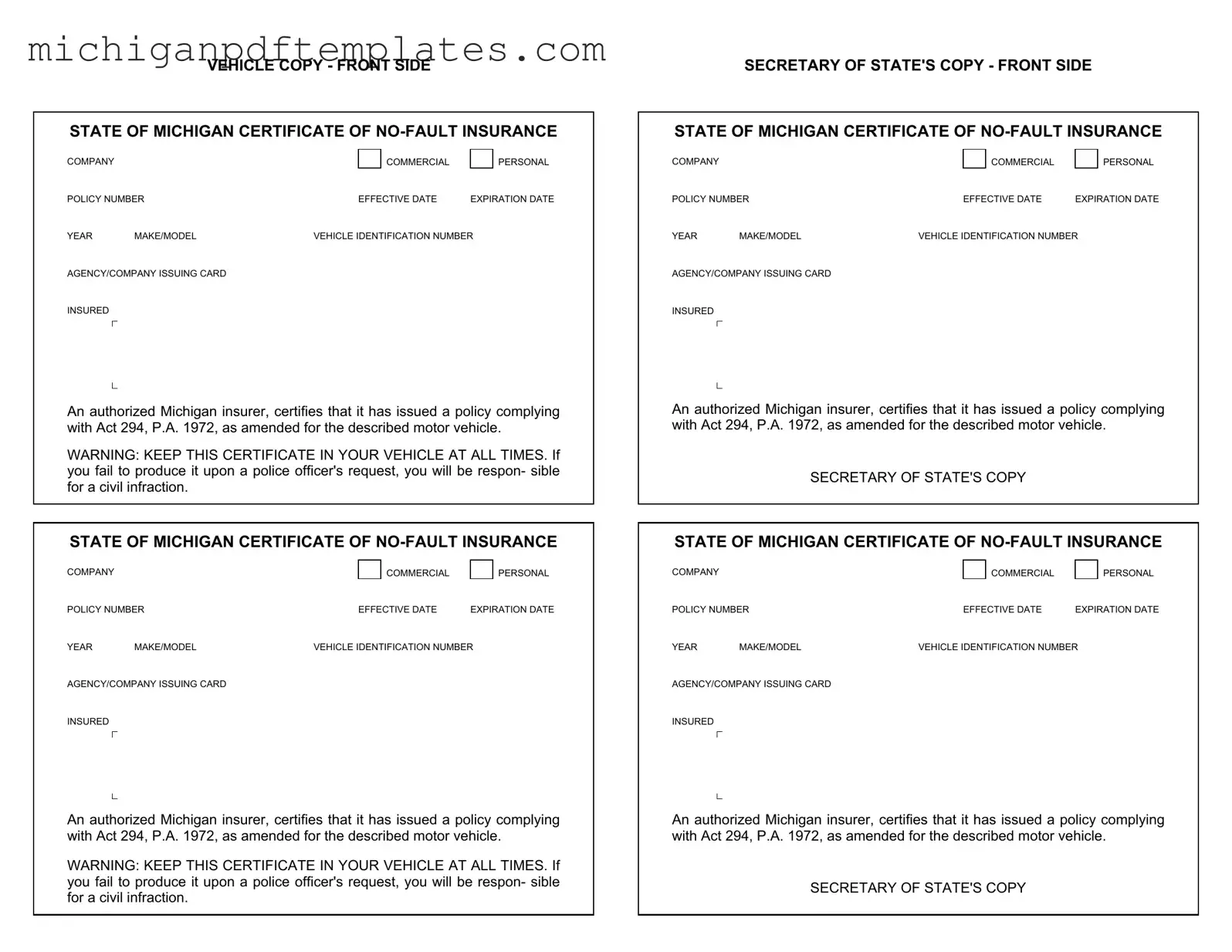Fill in Your Michigan No Fault Insurance Form
The Michigan No Fault Insurance form serves as a certification that a motor vehicle is insured in accordance with state law. This document is essential for vehicle owners and registrants in Michigan, as it demonstrates compliance with the insurance requirements outlined in Act 294, P.A. 1972. Failure to present this form when requested by law enforcement can result in civil penalties.
To ensure you are properly insured, fill out the Michigan No Fault Insurance form by clicking the button below.
Get Your Form Now
